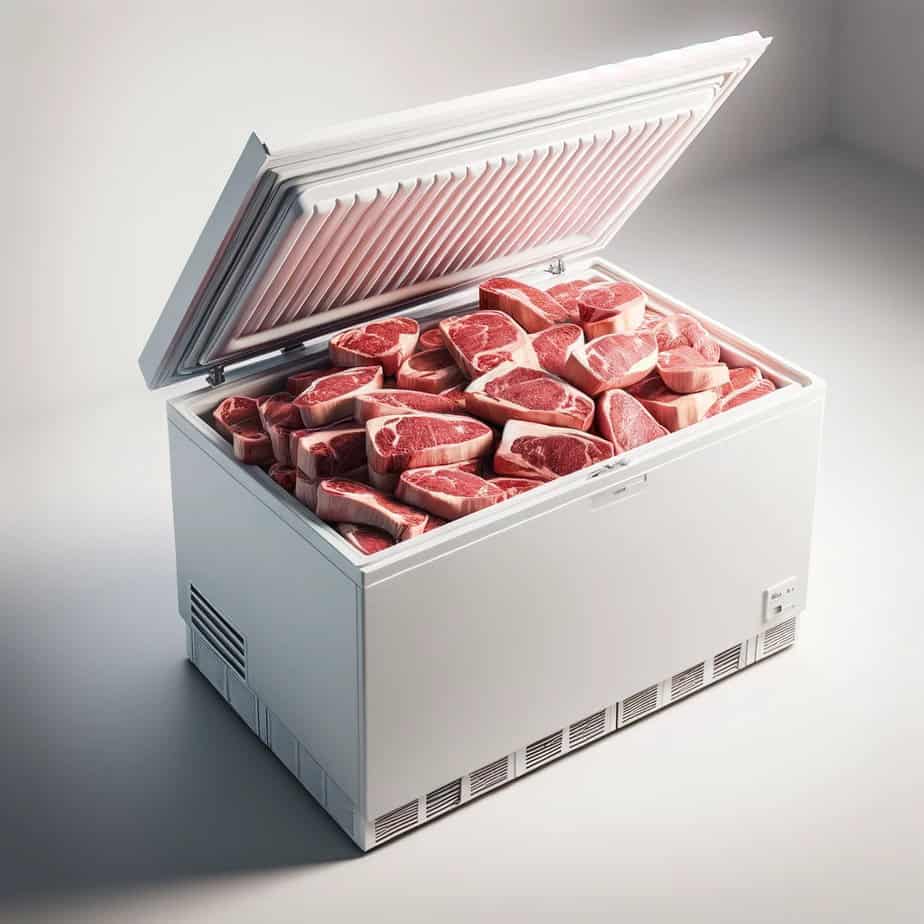[lwptoc]
Buying meat in bulk is a smart choice for ensuring freshness and saving money. However, an important aspect often overlooked is the storage of the beef. Adequate freezer space is crucial. Without proper planning for storage, especially for larger quantities like half a cow, you might find yourself needing to consume the meat quickly to avoid spoilage.
Determining Your Freezer Space Requirements
Wondering how much freezer space you’ll need for your bulk beef purchase? Here’s a quick guide:
- 1/8 Share of Beef: Approximately 3 cubic feet.
- 1/4 Share of Beef: Ranges between 5-7 cubic feet.
- Half a Cow: Requires 8-10 cubic feet.
- Whole Cow: Needs about 16 cubic feet.
Please note that these figures are approximate estimates. The actual freezer space required can vary based on the butchering, packaging, and arrangement of the meat. It’s advisable to consult with your butcher for a more accurate estimate tailored to your specific purchase.
| Chest freezer (cubic ft) | Chest freezer (Liters) | Upright freezer | Upright freezer (Liters) | |
|---|---|---|---|---|
| Minimum size for 1/8 cow | 3 cu ft | 100 L | 5 cu ft | 140 L |
| Minimum size for 1/4 cow | 5 to 7 cu ft | 140 to 200 L | 5 cu ft | 140 L |
| Minimum size for 1/2 | 8-10 cu ft | 227-290 L | 8-10 cu ft | 227-290 L |
| Minimum size for a whole cow | 20 cu ft | 570 L | 18 cu ft | 510 L |
My Chest Freezer Selection Journey
In my quest for the perfect chest freezer, I considered my regular purchases: about a quarter of a cow every six months and roughly 20 whole chickens quarterly. Balancing these needs, I opted for a 7 cubic feet chest freezer, providing an ample storage volume of 200 liters.
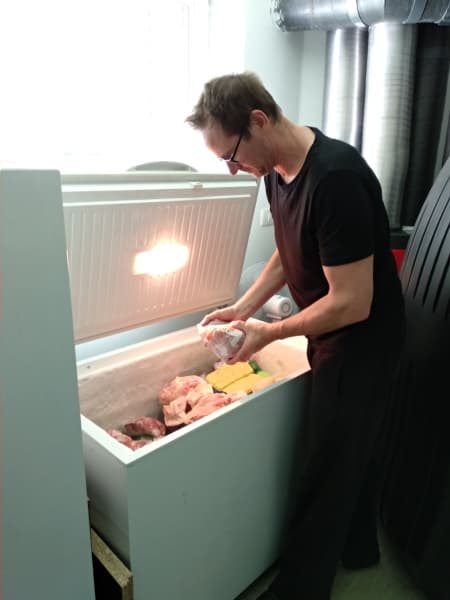
Finding an ideal freezer for beef storage can be challenging. After several hours of researching forums, Amazon reviews, and product listings, I successfully identified the best option. For those with similar needs, especially if managing a household with high meat consumption like mine with three hungry boys, I’ve compiled a list of top freezer choices to consider.
If you already know that you need a 7 cu ft chest freezer I made detailed research about them in my other post best 7 cu ft chest freezer.
BEST CHEST FREEZERS FOR STORING BEEF
Table could not be displayed.BEST UPRIGHT FREEZERS FOR STORING BEEF
Table could not be displayed.Selecting the Right Chest Freezer for Your Beef Storage Needs
Understanding Beef Weights and Freezer Sizes:
- Half a Cow: Typically weighs around 300 pounds (136 kg).
- Quarter of a Cow: About 150 pounds (68 kg).
- Eighth of a Cow: Roughly 70 pounds (32 kg).
Freezer Size Recommendations:
- For Half a Cow: A comfortable fit generally requires a 24-28 cubic feet freezer. This equates to approximately 1 cubic foot per 28 pounds (12.7 kg) of meat.
- For a Quarter of a Cow: A standard 7 cubic feet (about 200 liters) chest freezer should suffice.
- For an Eighth of a Cow: Smaller chest freezers, proportionate to the quarter cow size, are adequate.
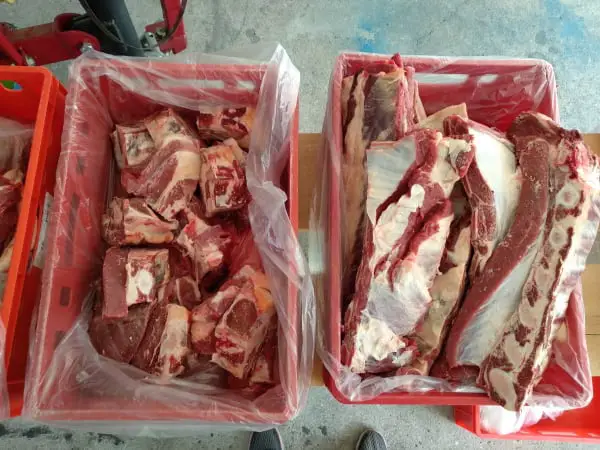
Considerations for Whole Cows:
Most heavy-duty deep freezers don’t extend to 28 cubic feet, which is typically needed for a whole cow. However, 22 cubic feet freezers are available and can store most of the cow, with some overflow requiring additional refrigeration.
For optimal storage and ease of access, consider two chest freezers:
- A larger one (around 20 cubic feet) for the bulk of the meat.
- A smaller one, possibly a deep freezer, for cuts you’ll use more frequently. This dual-freezer approach helps in organizing and accessing specific cuts more conveniently.
Choosing the Ideal Upright Freezer for Different Beef Quantities
Like chest freezers, the required size for an upright freezer also depends on the amount of beef you intend to store. However, upright freezers provide superior organization capabilities.
Upright freezer Size Guide:
- For Half a Cow: Efficient organization can enable you to store a half cow in an upright freezer of less than 10 cubic feet.
- For a Whole Cow: For storing an entire cow, consider a larger upright freezer. Models with two or three doors, offering a capacity of 35 cubic feet or more, are suitable for this purpose.
- Material Recommendation: Stainless steel freezers are highly recommended for beef storage due to their durability and ease of cleaning.
Note on Smaller Quantities:
- For a Quarter or an Eighth of a Cow: A single-door upright freezer is generally sufficient. The size can be adjusted based on the specific volume of beef.
Upright freezers’ organizational advantage makes them a viable option for various quantities of beef, ensuring easy access and efficient use of space.
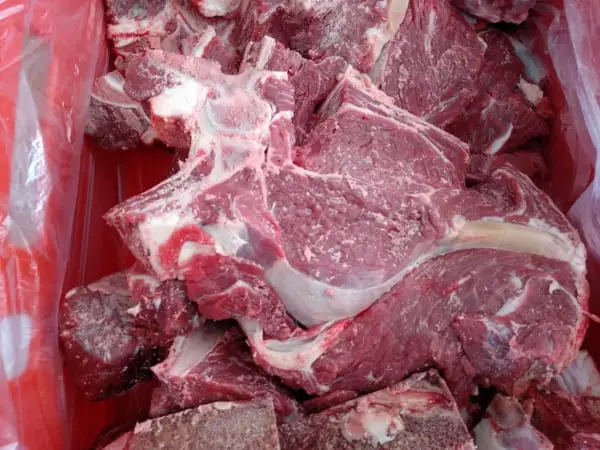
Deciding Between a Chest and Upright Freezer for Beef Storage
The choice between a chest and an upright freezer depends on your available space, dietary preferences, family size, and consumption rate. Different households have varying usage rates; some may consume half a cow in a few months, while others might finish it in under a month.
When to Opt for a Chest Freezer:
- Space Availability: Ideal if you have ample space in your garage, basement, or outdoors.
- Simplicity over Organization: Chest freezers are less suited for those who prioritize organization. They are more challenging to keep organized, making them better for those who don’t mind a bit of disarray.
- Limited Variety Storage: Best for storing a few types of items, such as only meat (beef, pork, chickens). Not ideal for a diverse range of items.
- Smaller Households: For one or two people, chest freezers are efficient for long-term storage without the need for meticulous organization.
When to Choose an Upright Freezer:
- Larger Households or High Meat Consumption: More suitable for families that consume a significant amount of meat.
- Organizational Preference: Upright freezers offer better organization, aiding in meal planning and easy access to various items.
- Space Constraints: Upright freezers are more space-efficient and fit better in smaller areas compared to chest freezers.
In conclusion, your choice will largely depend on your specific storage needs, lifestyle, and space availability. Both types of freezers have their advantages and can be selected based on what aligns best with your household’s requirements.
Organizing Your Freezer for Bulk Beef Storage
Effectively organizing your freezer is crucial when storing large quantities of beef. Here are some essential tips to ensure everything is stored properly and remains easily accessible:
- Separate Each Cut: Use bags, Tupperware, or similar containers for individual cuts. The arrangement will vary depending on the cuts you acquire from your butcher.
- Organize Innards Separately: Parts like liver and other innards should be isolated from the main cuts of meat. Ideally, divide them into three categories for easy access and better preservation:
- A section for the stomach and intestines.
- A compartment for the liver and heart.
- A separate area for the tongue and/or brain.
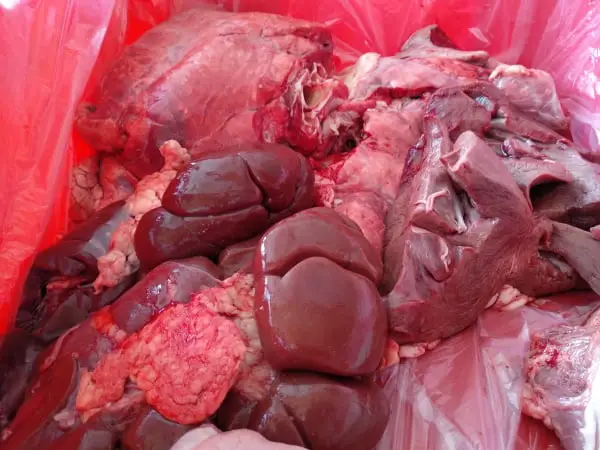
- Distinguish Between Boneless and Bone-In Meats: Keep boneless meats separate from those with bones. Bone-in cuts are typically heavier and could compress or damage boneless meats. Separation also aids in quickly locating specific cuts.
- Prioritize Less Preferred Cuts: Place the cuts you are less fond of in visible areas of the freezer. This strategy prevents these cuts from being overlooked and wasted, encouraging you to use them more creatively.
By following these guidelines, you can maximize the use of your freezer space and maintain the quality of your stored beef, ensuring that nothing goes to waste and everything remains easy to find.
Maximizing Freezer Space for Beef Storage
| How much meat will a whole chest freezer hold (package weight) | How much meat will a whole upright freezer hold (package weight) | |
|---|---|---|
| 5 cubic feet | 140 lb (64 kg) | 150 lb (68 kg) - ¼ cow |
| 6-7 cubic feet | 196 lb (89 kg) | 200 lb (91 kg) - half a cow |
| 8 cubic feet | 224 lb (102 kg) - half a cow | 230 - 240 lb (104-109 kg) |
| 9-12 cubic feet | 336 lb (152 kg) | 340 - 360 lb (154-163 kg) |
| 16 cubic feet | 448 lb (203 kg) | 448-460 lb (203-209 kg) |
| 17-21 cubic feet | 588 lb (267 kg) maximum - whole cow | 580-620 lb (263-281 kg) - whole cow |
Packaging Makes a Difference:
- Pre-packaged beef, being already sealed and compact, fits more efficiently in a freezer. This organized packing method not only saves space but also conserves energy.
General Storage Rule:
- As a rule of thumb, you can store about 28 pounds of beef per cubic foot. This means a standard chest or deep freezer, typically around 7 cubic feet, can accommodate roughly a quarter of a cow. Larger freezers, with capacities near 300 pounds, can store more but might not be as space-efficient.
Choosing the Right Freezer for Larger Quantities:
- For quantities exceeding half a cow, which is approximately 300 pounds, an upright freezer becomes a more suitable option. Upright freezers provide better organization and space utilization, making them ideal for storing a whole cow.
Importance of Organization:
- Effective organization within your freezer is key. It not only allows you to store more but also facilitates easier planning and access to your beef.
Conclusion
Choosing the right freezer and organizing it efficiently are key to maximizing the storage of bulk beef. Whether it’s a chest or upright freezer, consider the size based on the amount of beef and your household’s needs. Proper packaging and strategic placement of different cuts can significantly enhance space utilization and accessibility, ensuring your bulk beef purchase remains fresh and easy to use.

